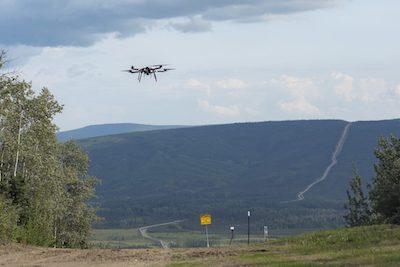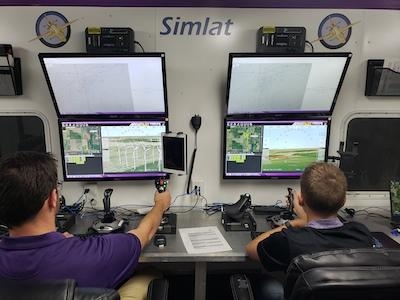Mon, Feb 20, 2023
Over Bold New Horizons
MissionGO, the Baltimore, Maryland-based aerospace manufacturer and purveyor of Unmanned Aerial System (UAS) solutions and services has lauded the introduction of bipartisan legislation aiming to create a streamlined and actionable approval process by which federal regulatory agencies—primarily the Federal Aviation Administration (FAA)—may assess and certify UAS Beyond Visual Line Of Sight (BVLOS) operations.

BVLOS denotes operation of a Remotely Piloted Aircraft (RPA) under conditions in which the device’s Pilot is either unable to maintain direct, unaided visual contact with the RPA, or the RPA and pilot are separated by a distance of greater than four-hundred-meters.
Introduced by U.S. Senators John Thune (Republican, South Dakota) and Mark R. Warner (Democrat, Virginia), the legislation encourages the United States to gain ground recently lost to numerous European and Asian nations, the civil aviation authorities of which have long-since approved, codified, and overseen the implementation of domestic BVLOS operations.
MissionGO director of flight operations Ryan Henderson stated: “The support from legislators on both sides of the aisle shows how critical standards and forward momentum is for this industry. MissionGO has collaborated with the FAA for BVLOS waivers. Streamlining the processes for safety and operations expectations will enhance our capabilities for critical cargo and infrastructure inspections.”

Cited within its own language as the Increasing Competitiveness for American Drones Act of 2023, the bill sets forth in part:
“In general, not later than two-years after the date of enactment of this section, the Administrator shall issue a final rule establishing a regulatory pathway for certification or approval of unmanned aircraft systems to enable commercial BVLOS operations …
The final rule … shall, at a minimum, do the following:
- Establish an applicable risk-assessment methodology for the authorization of BVLOS unmanned aircraft system operations that includes quantified measures of acceptability which sufficiently account for the total air and ground risks associated with such operations and the means for mitigating such risks …
- Establish remote pilot certification standards for remote pilots for BVLOS operations, taking into account varying levels of automated control and management of unmanned aircraft system flights …
- Establish an airworthiness process for small unmanned aircraft systems that requires a manufacturer’s declaration of compliance to a Federal Aviation Administration accepted means of compliance …
- Amend the Code of Federal Regulations to establish generally applicable standards for the type certification of unmanned aircraft systems that the Administrator determines pose higher air or ground risks …
- Establish operating rules for the operation of unmanned aircraft systems …
More News
Circle To Runway (Runway Number) Used by ATC to inform the pilot that he/she must circle to land because the runway in use is other than the runway aligned with the instrument appr>[...]
Aero Linx: National Aviation Safety Foundation (NASF) The National Aviation Safety Foundation is a support group whose objective is to enhance aviation safety through educational p>[...]
At Altitude Of About 250-300 Ft Agl, The Airplane Experienced A Total Loss Of Engine Power On November 6, 2024, at 1600 central standard time, a De Havilland DHC-1, N420TD, was inv>[...]
From 2009 (YouTube Edition): Three Hour Flight Was 'Flawless' -- At Least, Until Mother Nature Intervened For anyone who loves the aviation business, this was a VERY good day. Afte>[...]
Also: AMA Names Tyler Dobbs, More Falcon 9 Ops, Firefly Launch Unsuccessful, Autonomous F-16s The Air Force has begun ground testing a future uncrewed jet design in a milestone tow>[...]
 ANN's Daily Aero-Term (05.05.25): Circle To Runway (Runway Number)
ANN's Daily Aero-Term (05.05.25): Circle To Runway (Runway Number) ANN's Daily Aero-Linx (05.05.25)
ANN's Daily Aero-Linx (05.05.25) NTSB Prelim: De Havilland DHC-1
NTSB Prelim: De Havilland DHC-1 Classic Aero-TV: The Boeing Dreamliner -- Historic First Flight Coverage
Classic Aero-TV: The Boeing Dreamliner -- Historic First Flight Coverage Airborne-NextGen 05.06.25: AF Uncrewed Fighters, Drones v Planes, Joby Crew Test
Airborne-NextGen 05.06.25: AF Uncrewed Fighters, Drones v Planes, Joby Crew Test




